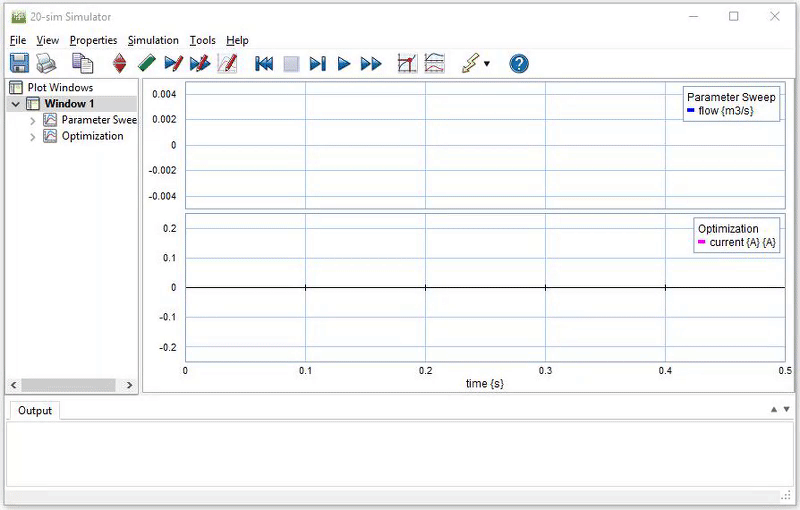
Time Domain
With time domain you can do parameters sweeps, optimization and more. During simulation, the time domain behavior of a model is calculated. Based on this time-domain behavior, the model can be analyzed. A set of powerful methods for Time Domain analysis is available in 20-sim.
Parameter Sweeps
Parameter sweeps are multiple simulations with a variation of parameter values. It is a quick method to see how your model behavior depends on the parameter values.

Parameter Optimization
Using Optimization, you can maximize the performance of your model by varying specified model parameters. Predefined or user defined cost functions can be used as a measure of model performance. A number of well known optimization methods can be used to minimize or maximize these cost functions. Using optimization to find controller parameters with optimal disturbance rejection.
Curve Fitting
With Curve Fitting you can fit model performance to a given result by variation of parameters. It is a very useful method to optimize model parameters when measurement data is available.
Sensitivity Analysis
Sensitivity Analysis is used to investigate the effect of parameter variation on model performance. The change in performance divided by the parameter change is plotted in a table. Sensitivity Analysis is a well-known method in production engineering to find critical systems tolerances in early stages of the design.
Monte-Carlo Analysis
With Monte-Carlo Analysis, you can perform a predefined number of simulation runs with statistical variation of parameter values. Results can be shown as histograms or inspected numerically. Monte Carlo Analysis is a powerful method to find out worst case model behavior.
Variation Analysis
With Variation Analysis you can find the statistical range of parameter values that yield a model with a certain performance level. Variation Analysis is a powerful method to find a measure for system tolerances in the early stage of the design.